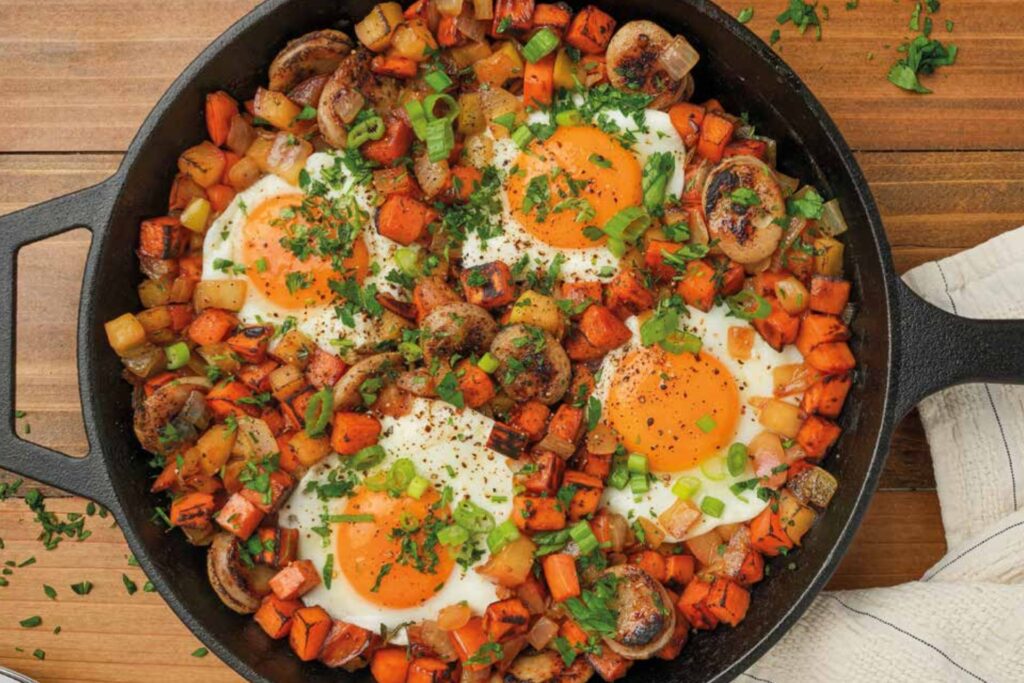In winter, we tend to spend a lot of time inside. But outside air and exercise are necessary for cooped up families. Picnics aren't just for summer. Soups, stews and other comfort foods transport perfectly in a Thermos or other insulated container for a winter picnic. If you don't have the bandwidth to pack your own food, try supporting local restaurants and picking up food to have. Read on for more winter picnic ideas.
There are a few options for keeping hot food hot on the trail; Thermoses do the trick for liquids, soups, and even stews (when transporting chunky, heartier soups and stews choose a short, squat Thermos with a wide mouth; if you own a tall, slim Thermos, go for smooth pureed soups that will pour more easily) and insulated carafes make it easy to bring along hot chocolate, tea, mulled cider or hot spiced lemonade. Foods that are contained in liquid—such as soups and stews—tend to retain their heat more, with their broth or sauce acting as a sort of insulation and heat catalyst while taking the place of the air that would normally occupy any empty spaces.
Much like a summer picnic, you’ll need to pack some disposable cups and spoons, unless your soup of choice is a thin, sippable puree. Larger insulated bags (like a lunch bag, only bigger) will keep everything inside toasty warm (or cold, during the summer months) for several hours.
Saucy stews and soup need a bread accompaniment; thick, sturdy biscuits, quick loaves and Irish soda bread make perfect pairings with whatever soup you choose. Try a giant slab scone made with cheesy dough and filled with pesto or your choice of jam; the large rectangle can be transported whole, wrapped in foil, to slice or break off into chunks on location. Similarly, a loaf of upside-down pan bread can be packed along wrapped in its baking pan, with a knife to divvy it up into wedges.
Don’t forget the beverages; winter tends to be a dry season despite all that snow, so it’s important to stay hydrated, particularly when engaging in winter sports. Warm spiced versions of lemonade and orange juice make great options when the weather dips below zero, and are equally delicious even if they do cool down. Powdered hot chocolate mixes can be very high in saturated and trans fats, sugar and preservatives; for real hot chocolate, whisk grated or finely chopped dark chocolate into warmed milk. If you like, sweeten to taste with a little honey.
Here's one of our winter-weather soups to get you started. This creamy soup combines the taste and texture of tomato soup with the sweet smokiness of roasted peppers.
Roasted Red Pepper and Tomato Soup
4 red bell peppers
canola or olive oil, for cooking
1 onion, peeled and chopped
2-3 garlic cloves, crushed
1/2 tsp. thyme
1 – 14 oz. (398 mL) can diced or whole tomatoes, undrained
1 L chicken or vegetable stock
1/4-1/2 cup half and half or light sour cream (optional)
salt and pepper to taste
extra sour cream, for serving (optional)
Cut red peppers in half lengthwise; pull out the seeds and ribs. Place cut side down on a baking sheet that has been lined with foil. Roast at 450°F or broil on high for about 30 minutes (less under the broiler), until blackened and blistered, rotating the sheet if necessary for them to cook evenly.
Remove from the sheet and place in a bowl; cover with the foil or a plate and let cool. When cool enough to handle, peel off the skins and discard them, dropping the peppers back into the bowl.
In a large saucepan or Dutch oven, heat a drizzle of oil over medium-high heat and sauté the onion for 5 minutes, or until soft. Add the garlic and cook for another minute, add the thyme, tomatoes and chicken stock and bring to a simmer; add the red peppers along with any juices that have accumulated in the bowl and cook for about 20 minutes.
Turn the heat down to low and add the cream, salt and pepper. Puree with a hand-held immersion blender or transfer to a blender in batches and pulse until smooth. Heat through, adjust the seasoning and serve warm. Serves 6.
Updated in February 2025.











